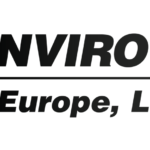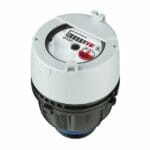“Transparency” is a watchword in food safety and quality control. So, why are global x-ray food systems closed stainless steel boxes? Sparc Systems has bucked this trend with its Apollo high-performance food x-ray inspection machine, engineering a system featuring magnetised sliding doors made of high-density see-through acrylic.
Safety issues around radiation and dealing with potentially high-voltage components means that many food manufacturers avoid purchasing x-ray inspection systems for food production lines. One of the key issues is factory staff are afraid of what they cannot see.
To help eliminate this fear factor, Sparc Systems designed a protective high-density acrylic window on its Apollo x-ray system. The same concept is also deployed in the company’s Theia x-ray and checkweigher combination system. With the radiography beams fully contained, staff can work alongside the machines and see up to 200 packs per minute travelling through the system, without feeling like they are putting personal safety at risk.
Food debris, product accumulations, bottlenecks etc, are instantly visible. Rather than carrying on unaware, operatives can stop production lines instantly, slide open the doors, clear and clean the conveyor, minimising disruption and reducing the likelihood of product damage.
FAREWELL FEAR FACTOR
The unique design, explains Sparc’s European Sales Manager Charlie Graham, means that every aspect of the product handling is transparent. “Having a clear side removes the mystery and fear factor, especially when there’s a stainless steel box with a big radiation sign on the side.”
An extra benefit of this inspection visibility is it removes the need for bulky safety guards. Temptation to lean into the machine to resolve a production blockage is also significantly reduced, addressing workforce Health & Safety. Being able to shorten the post inspection conveyor is an additional advantage, reducing factory footprint.
Rather than using compressed air, Sparc x-rays all feature electric servo drives, saving food factories up to £4,000 annually on each production line. These electric drives also mean the machines can inspect up to 200 packs per minute and accurately reject contaminated products faster.
Aside from energy savings, one of the key advantages of an electric drive is Sparc can locate the reject unit beneath the conveyor within the body of the machine, highlights Charlie. “This helps us to keep the unit compact and slimline compared to having the reject bin protruding to the side.”
RELIABLY RELIABLE
Precision inspection technology is an important element of any food processing and packaging operation. X-ray systems like the Apollo are best suited to an in-line inspection operation, complementing metal detectors typically located towards the end of a processing line to drive increased efficiency, security and control of product quality.
Created for quality checking sliced meats, cheese and ready meal application, the Apollo can accommodate all pack formats measuring 300mm by 300mm and 100mm deep. A multi-lane x-ray system is even available from Sparc that can inspect up to 2,400 product packs per minute, notes Charlie.
In addition to food safety, the Apollo x-ray machine offers plenty of extra benefits. For example, it can flag if there are any missing components in product i.e. specific ingredients in ready meals, missing chocolates in a box or meat absorbers. It can also detect any broken or mispackaging that has occurred during the processing, ensuring absolute quality of the end product.
Whereas other suppliers are reducing the cabinet dimensions, Sparc engineers maintain that a heavier framework reduces vibration, which affects the reliability and performance of x-ray tubes. Rather than using a oil filled radiating system which are prone to leaks or an expensive, energy intensive air conditioning unit, Sparc’s slightly larger x-ray unit also accommodates an air cooled x-ray generator helping to regulate the filament temperature at a constant 30°C.
Built from 6mm thick steel sheeting (virtually double the thickness of other food x-ray machines on the market) eliminates the need to add more protective lead. And with no boxed sections, fewer welded joints and drop through conveyors, there’s less chance of cross contamination from product residue and water droplets.
DIGITISED MACHINE TEST AUDITS
Collating live OEE data and reporting results directly to Quality Assurance personnel is becoming increasingly imperative in fast-moving food production lines. To maintain compliance with retailer Codes of Practices and HACCP principles, the Apollo system features a swipe touchscreen HMI, equipped with audit software and unlimited pre-programmed COP test parameters.
When a routine Quality Assurance machine test is due – typically hourly intervals – a visual alert is issued to operatives. Test data is transmitted directly from the machine to the factory’s QA manager, increasing traceability and eliminating human error. “It’s a failsafe machine performance test system,” adds Charlie.








